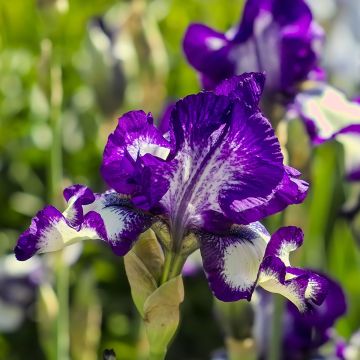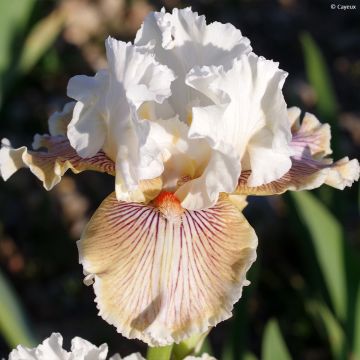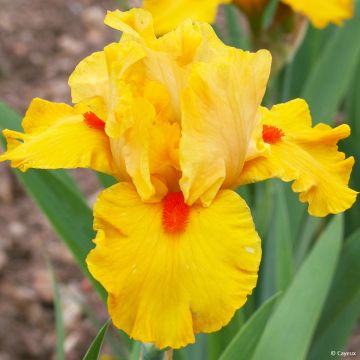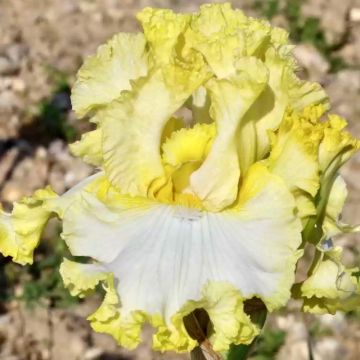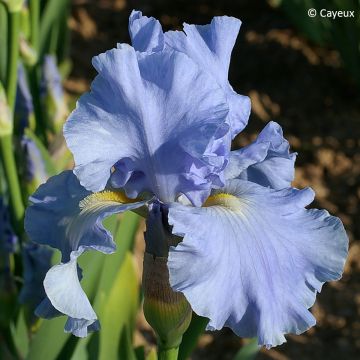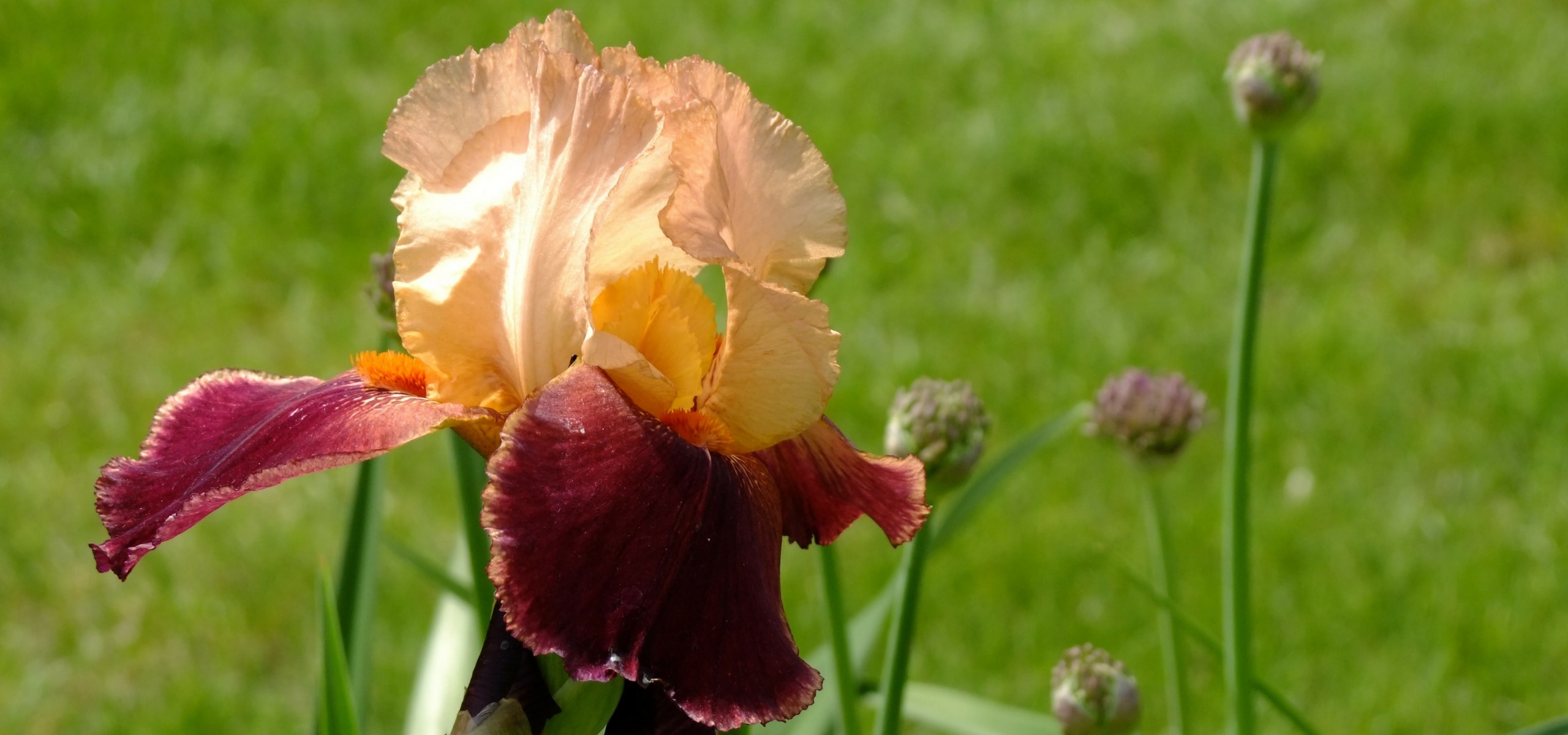
Iris germanica: how to propagate them?
our tips for dividing your irises
Contents
Iris germanica, or Garden Iris, offers a stunning flowering in spring that is both exuberant and refined. They are quite easy to cultivate, as long as you plant them in warm, well-drained soil. For more information, discover our planting tips.
However, over time, irises eventually become exhausted and produce less abundant flowering. We recommend dividing them approximately every four years to renew and thin out the clumps, giving them more space. This will make them more vigorous and floriferous. You can also take this opportunity to plant them elsewhere in your garden or share them with others!
When to divide irises?
Division takes place after the flowering, when the plant is in a dormant state (yellowing foliage), between July and October. We suggest repeating the operation every four years.
Read also
How to care for irises?Necessary materials for dividing your irises
Discover other German Iris - Bearded Iris
View all →Available in 2 sizes
Available in 2 sizes
Available in 2 sizes
Available in 2 sizes
Available in 2 sizes
Available in 2 sizes
Available in 2 sizes
Available in 2 sizes
Available in 2 sizes
Available in 2 sizes

Read also
How to plant irisHow to divide irises?
- Start by preparing the soil where you will plant your irises. Preferably choose a location where irises have not been planted before. Using a soil aerator or a spade, loosen the soil to a depth of 10 cm, incorporating coarse sand or gravel if your soil is heavy. Iris germanica require a very well-draining substrate!
- Uproot the clumps with a fork, being careful not to damage the rootstocks.
- Remove the excess soil around the roots.
- Next, cut segments with roots and leaves, taking them from the outside of the rootstock to obtain the youngest parts. Make clean cuts using a disinfected knife to prevent the development of diseases. Only keep healthy and undamaged fragments.
- Trim the leaves to reduce their surface area to one third of their original length.
- Plant the rootstock segments 30 centimetres apart, allowing the top of the rootstock to be level with the soil surface. Replace the soil and gently firm it down.
- Finally, remember to water lightly to ensure their establishment, for a beautiful flowering next year.
Tips and mistakes to avoid
Tips for a successful propagation
Always plant the rootstocks slightly exposed to avoid rotting
- Unlike other plants, iris needs its rootstock to remain partially exposed to the sun.
- If buried too deeply, it risks rotting due to moisture.
- A good technique is to leave the upper half of the rootstock above the soil.
Divide every 3 to 5 years for beautiful flowering
- Over time, the clump of iris becomes too dense, which reduces its flowering.
- By regularly dividing (every 3 to 5 years), you ensure good renewal and prevent the centre of the clump from deteriorating.
- A good indicator that it’s time to divide: fewer flowers and heavily overlapping rootstocks.
Label the varieties to keep track
- If propagating several varieties, it can be difficult to keep track before flowering.
- A simple tip is to label each variety with a tag (tag planted in the soil or coloured ribbon on the leaves).
- You can also note the colours and heights of the irises to organise your bed effectively.
- Subscribe!
- Contents



































